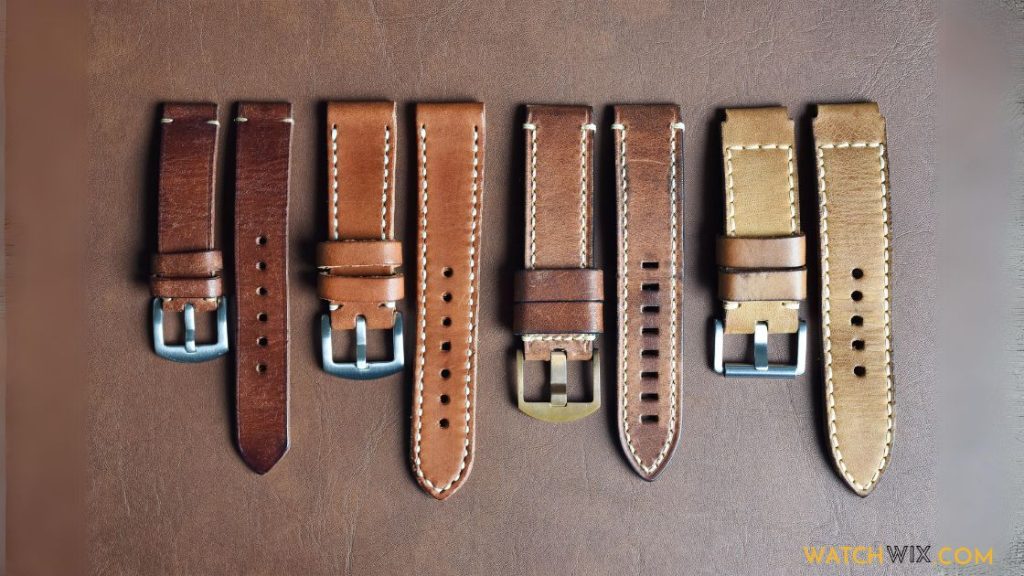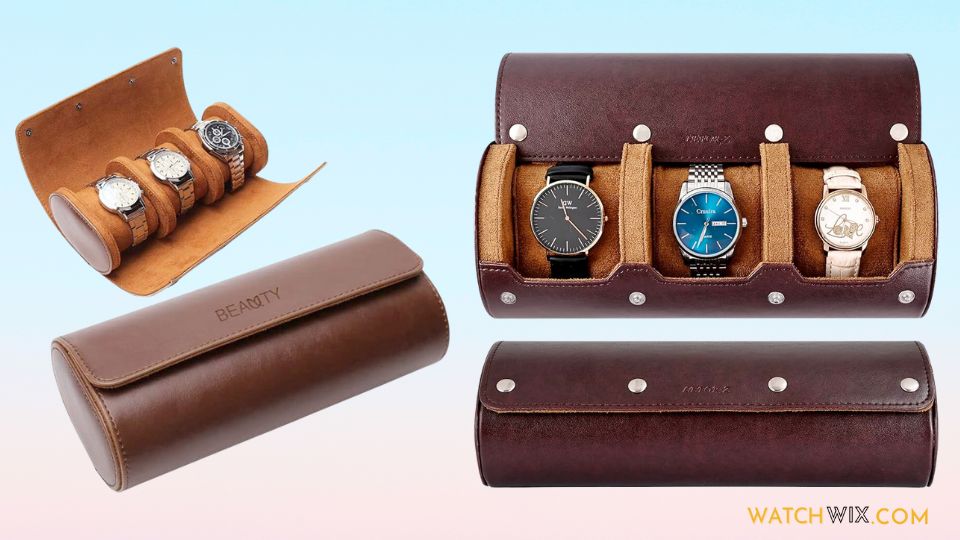How to Prevent Leather Watch Strap from Cracking
Hey watch lovers! Have you ever noticed your beloved leather watch strap developing cracks over time? It’s a common woe among timepiece aficionados, but fear not! In this guide, we’re delving into the world of leather care to unveil the secrets to preventing those unsightly cracks from appearing. Your watch strap plays a crucial role in both style and functionality, and maintaining its integrity is key to preserving the elegance of your timepiece. Read below to explore practical tips, expert insights, and simple yet effective strategies to keep your leather watch strap looking flawless for years to come.
Why Leather Watch Strap is Cracking
Leather watch straps can develop cracks for several reasons, often related to lack of proper care and environmental factors. Over time, exposure to sunlight, heat, and moisture can cause the leather to dry out and lose its natural oils, leading to brittleness and cracking. Additionally, frequent bending and flexing of the strap during wear can weaken the leather fibers, especially if the strap is not regularly conditioned. Poor quality leather or improper manufacturing techniques can also contribute to premature cracking.
Conditions that will Make your Leather Strap Crack
There are several conditions can contribute to the cracking of a leather watch strap, as mentioned below,
- Exposure to Sunlight: Prolonged exposure to direct sunlight can cause the leather to dry out and lose its natural oils, leading to brittleness and cracking.
- Heat: High temperatures, such as those found in hot climates or near heat sources like radiators or heaters, can accelerate the drying process and cause the leather to crack.
- Moisture: While leather requires some level of moisture to maintain its suppleness, excessive moisture from activities like swimming or showering can cause the leather to swell and contract, leading to cracking over time.
- Humidity: High humidity levels can promote the growth of mold and mildew on leather surfaces, which can weaken the fibers and contribute to cracking.
- Abrasion: Friction and rubbing against rough surfaces can cause abrasions and wear on the leather, weakening its structure and making it more prone to cracking.
- Lack of Conditioning: Failure to regularly condition the leather strap can result in dryness and loss of flexibility, making it more susceptible to cracking.
- Age: As leather ages, it naturally loses its oils and becomes more prone to drying out and cracking, especially if not properly cared for.
By understanding these conditions and taking proactive measures to protect and maintain your leather watch strap, you can help prevent cracking and prolong its lifespan. Regular cleaning, conditioning, and avoiding exposure to extreme conditions are key to keeping your leather strap in optimal condition.
How to Properly Clean Watch Leather Strap
Properly cleaning your watch leather strap is crucial for maintaining its appearance and durability. Here’s a step-by-step guide:
Step 01: Preparation
Gather materials including a soft cloth, mild soap (ex: baby shampoo), water, and a leather conditioner (optional).
Step 02: Remove from Watch
Detach the leather strap from the watch to clean it thoroughly without damaging the watch components.
Step 03: Dust Removal
Use a soft cloth to gently wipe away any surface dust and dirt from the strap.
Step 04: Soap Solution
Mix a small amount of mild soap with water to create a gentle cleaning solution. Dip a soft cloth into the solution and wring out excess water.
Step 05: Spot Cleaning
Gently rub the damp cloth over any stubborn stains or spots on the strap. Avoid excessive rubbing, which could damage the leather.
Step 06: Rinse
Wipe the strap with a clean, damp cloth to remove any soap residue.
Step 07: Dry
Pat the strap dry with a clean towel to remove excess moisture. Avoid using heat sources to dry the leather, as this can cause it to crack.
Step 08: Conditioning (Optional Step)
Apply a small amount of leather conditioner to a soft cloth and gently rub it into the strap. Conditioning helps moisturize the leather and restore its flexibility. Follow the manufacturer’s instructions for application.
Step 09: Air Dry
Allow the leather strap to air dry completely before reattaching it to your watch. This ensures that any remaining moisture evaporates and the leather absorbs the conditioner.
Step 10: Reattach to Watch
Once the strap is dry, reattach it to the watch carefully, ensuring that the spring bars are securely fastened.
You can effectively clean your watch leather strap and keep it looking its best for years to come by following above steps. Remember to perform this cleaning process regularly to maintain the appearance and longevity of your strap.
Why Leather Watch Straps Require Special Care
Leather watch straps require care because leather is a natural material that can be affected by environmental factors and wear over time. Without proper maintenance, leather can dry out, lose its flexibility, and become susceptible to cracking, fading, and discoloration. Regular cleaning, conditioning, and protection from moisture and harsh chemicals are essential to preserve the appearance and integrity of the leather strap. By caring for your leather watch strap, you can extend its lifespan and ensure it continues to complement your timepiece for years to come.

Tips to Improve Long Use of Your Watch Leather Strap
Following are some tips to improve the longevity of your watch leather strap,
- Regular Cleaning: Clean your leather strap regularly with a soft cloth to remove dirt, oils, and residues that can accelerate wear and tear.
- Give Rest to Leather Straps
You can switch the leather straps time to time (ex: few months basis) if you have more than one leather strap. This will provide a breathing space for the leather strap and will ensure the longer usage. - Avoid Water Exposure
Keep your leather strap away from water to prevent damage and deterioration. Remove your watch before activities involving water, such as swimming or showering. - Conditioning
Apply a leather conditioner periodically to moisturize and protect the leather, keeping it supple and resilient against cracking. - Storage
Store your watch in a cool, dry place when not in use to prevent exposure to moisture and extreme temperatures, which can degrade the leather. - Rotate Straps
If you have multiple watch straps, rotate them regularly to reduce wear and tear on individual straps and prolong their lifespan. - Handle with Care
Be gentle when handling your watch to avoid unnecessary stress on the leather strap, such as bending or twisting. - Avoid Harsh Chemicals
Keep your leather strap away from harsh chemicals, such as perfumes and cleaning agents, which can damage the leather finish. - Professional Maintenance
Consider having your leather strap professionally cleaned and conditioned periodically to maintain its condition and appearance.
You can significantly improve the long-term use and enjoyment of your watch leather strap by following these tips and incorporating them into your watch care routine.
Types of Watch Leather Straps
There are several types of watch leather straps available, each offering unique characteristics and styles to suit different preferences. Below are few of them,
- Smooth Leather – Smooth leather straps are classic and versatile, featuring a sleek and polished appearance. They are typically made from cowhide or calf leather and come in various colors and finishes.
- Textured Leather – Textured leather straps feature embossed patterns or textures, such as crocodile, alligator, or ostrich grain. These straps add visual interest and texture to your watch, providing a more luxurious and distinctive look.
- Suede Leather – Suede leather straps have a soft, velvety texture that adds a touch of elegance and sophistication to your watch. They are comfortable to wear and are available in a range of colors, making them suitable for both casual and dressy occasions.
- Nubuck Leather – Nubuck leather straps are similar to suede but have a finer texture and slightly smoother finish. They offer a refined look and feel, with a subtle sheen that adds a touch of sophistication to your watch.
- Distressed Leather – Distressed leather straps have a weathered or aged appearance, giving them a vintage and rugged charm. They are often treated with special finishes or distressing techniques to create a worn-in look that adds character to your watch.
- Perforated Leather – Perforated leather straps feature small holes or perforations along the length of the strap, adding a sporty and breathable design. They are popular for sports and racing-inspired watches, providing a unique and athletic aesthetic.
- Padded Leather – Padded leather straps are thicker and more substantial, with additional padding along the center of the strap. This padding adds volume and depth to the strap, creating a luxurious and comfortable fit on the wrist.
- Shell Cordovan Leather – Shell cordovan leather is made from the hindquarters of horsehide and is known for its smooth, glossy finish and exceptional durability. It is a premium leather option favored by luxury watch enthusiasts for its unique characteristics and timeless appeal.
How to Protect Your Watch Leather Strap from Moisture
It is recommended to avoid prolonged exposure your leather strap watch to water and humidity. You should remove your watch before activities involving water, such as swimming, showering, or washing dishes, to prevent saturation of the leather. If your strap does get wet, promptly dry it with a soft cloth to remove excess moisture and allow it to air dry completely before wearing it again.
Additionally, store your watch in a cool, dry place away from sources of moisture and humidity when not in use. Regular conditioning of the leather strap can also help maintain its natural oils and resistance to moisture. You can prolong the lifespan of your watch leather strap and keep it looking its best by taking these precautions.
What are the Types of Leather Conditioners?
There are several types of leather conditioners available, each with its own characteristics and intended uses:
- Creams
Leather conditioning creams are thick, creamy formulations designed to penetrate deep into the leather fibers, moisturizing and nourishing them from within. They are ideal for conditioning dry or stiff leather and restoring its flexibility and softness. - Lotions
Leather conditioning lotions are lighter in texture than creams and are typically used for regular maintenance and light conditioning. They provide hydration and protection to the leather without leaving a heavy residue. - Oils
Leather conditioning oils, such as neatsfoot oil or mink oil, are highly moisturizing and penetrate deep into the leather to replenish lost oils and restore suppleness. They are particularly effective for conditioning heavily worn or dry leather. - Sprays
Leather conditioning sprays are convenient and easy to apply, providing a thin, even layer of conditioning agents over the surface of the leather. They are suitable for regular maintenance and can help protect the leather from moisture and stains. - Waxes
Leather conditioning waxes contain a blend of natural waxes, such as beeswax or carnauba wax, that provide a protective barrier over the surface of the leather, sealing in moisture and repelling water and stains. They are commonly used on outdoor gear and footwear for added waterproofing and protection. - All-in-One Products
Some leather conditioners combine multiple conditioning agents, such as oils, waxes, and moisturizers, into one product, offering comprehensive protection and conditioning in a single application.
You should consider factors such as the type of leather you’re conditioning, the level of hydration it requires, and any specific properties you’re looking for, such as waterproofing or stain resistance when choosing one. Always follow the manufacturer’s instructions for application and testing on a small, inconspicuous area of the leather before applying it to the entire surface.
How to Store Your Leather Strap Watch without Bending
Storing your leather strap watch without bending it is essential to maintain its shape and integrity. Here is a quick guide for that,
- Use a Watch Box or Pouch – Store your watch in a watch box or a soft pouch designed specifically for watches. These provide cushioning and protection against scratches, keeping your watch secure without bending the strap.
- Lay Flat – Lay your watch flat on a soft surface, such as a padded tray or a velvet-lined drawer. Ensure the strap is straight and not twisted or folded to avoid bending.
- Insert a Watch Pillow – If using a watch box, insert a watch pillow or cushion under the caseback of your watch to support it without putting pressure on the strap.
- Avoid Hanging – Avoid hanging your watch by its strap, as this can cause the strap to stretch or deform over time.
- Store Away from Heat and Moisture – Store your watch in a cool, dry place away from direct sunlight, heat sources, and moisture, as these can damage the leather strap.
- Rotate Watches – If you have multiple watches, consider rotating them regularly to prevent prolonged pressure on the same strap.

You can keep your leather strap watch safe and secure without risking damage to the strap from bending or folding by using above tips.
How to Stop Leather Watch Straps from Smelling
You should keep your leather straps clean and dry to prevent development of unpleasant odors. Regularly wipe down the strap with a damp cloth to remove dirt, oils, and residues that can contribute to odor buildup. Avoid wearing your watch during activities that may cause excessive sweating or exposure to moisture, and remove it before showering or swimming. If your strap does become damp, allow it to air dry completely before wearing it again.
Additionally, consider using a leather-safe deodorizer or applying a small amount of baking soda to help absorb odors. Proper storage in a clean, dry environment can also help prevent odors from developing. Regular maintenance and good hygiene practices are key to keeping your leather watch strap smelling fresh and clean.





![Importance of Rolex Papers [2024 Detail Guide]](https://watchwix.com/wp-content/uploads/2024/05/Importance-of-Rolex-Papers-768x514.jpg)